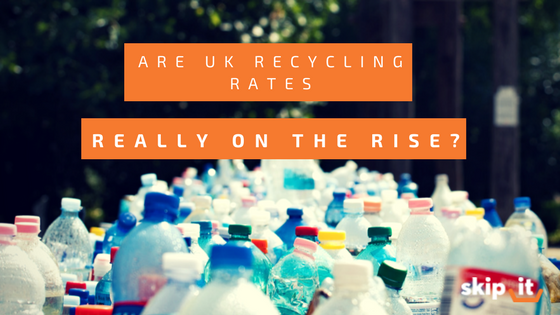The UK’s latest recycling figures have been released and they show a change in the country’s approach to waste collection. In 2016 the country’s overall recycling rates rose by a small, but noticeable 0.6 per cent. After having reduced slightly the year before, the total figure for recycling of municipal (household waste) in 2016 was 45.2 per cent.
Despite this, there is some controversy over the accuracy of this figure. Changes in the way municipal waste recycling rates were calculated for the 2015 and 2016 period cast doubt on this improvement
Recycling rates: Past and present
The controversy comes due to the inclusion of incinerator bottom ash (IBA) metals into the final figures, which weren’t previously included. This calls into question whether the overall recycling rates themselves actually rose in 2016, or whether the new method of measuring bolstered the figures.
According to government data, since 2000, the overall proportion of municipal recycling rates in the UK has risen, year on year, until 2015, when they dropped for the first time. Between 2000 and 2014, municipal waste collection rose from11.2 per cent to 43.7 per cent of total waste, before dipping slightly to 43 per cent in 2015. Depending on the method used to measure rates, this puts our overall proportion of recycling to landfill at the same levels recorded in 2014, or just slightly above.
Recycling rates: Past and present
The UK is aiming for the same 50 per cent target for municipal waste recycling by 2020 that was established by the EU. Due to comparatively small increases in recycling rates over the last few years, it looks increasingly unlikely that we’re going to reach this target by the deadline without some significant efforts.
Within the United Kingdom, there are marked significant variation in recycling rates between the four nations. Wales continues to lead the pack recycling 57.3 per cent of waste – already having met the EU target by some margin. In second place is England at 44.9 per cent, followed by 43 per cent in Northern Ireland, with Scotland at the back of the pack on 42.8 per cent.
What does this mean for waste collection?
If we’re to meet either the EU-wide, or our own waste collection recycling targets, we’re going to have to seriously rethink the way we approach recycling. Though this rise is a good thing, it follows a trend of there being no significant variation in recycling rates since about 2010.
The figures suggest that we’re approaching the maximum amount of recycled produce that we can get out of current waste collection infrastructure. Unless wide ranging reforms are implemented, the figures will likely continue to stagnate, with any improvements becoming incrementally smaller each year.
That’s why it’s particular incumbent on each of us, whether with our own municipal waste, house clearance services, or business waste collection services, to make sure we recycle as much of our waste as possible
In order to guarantee that, trust the responsible waste collection experts here at Skip It.






